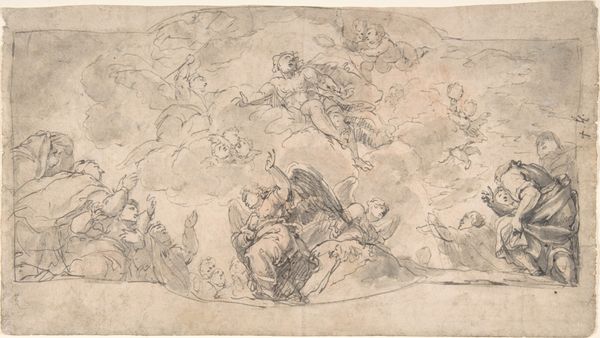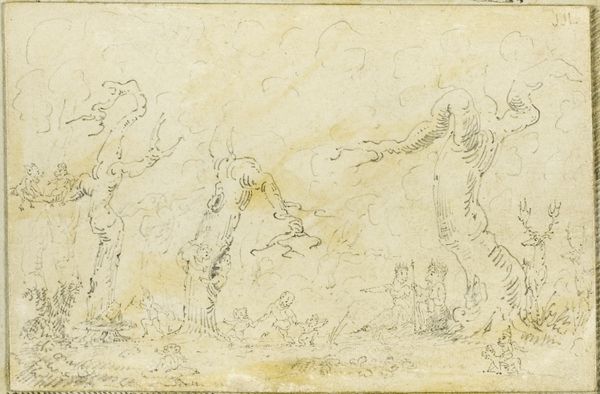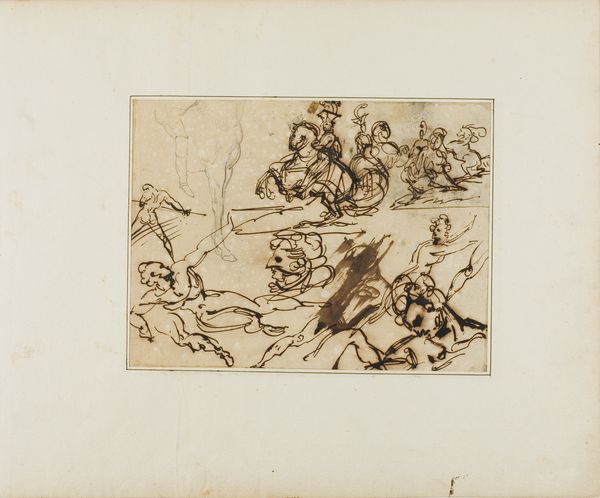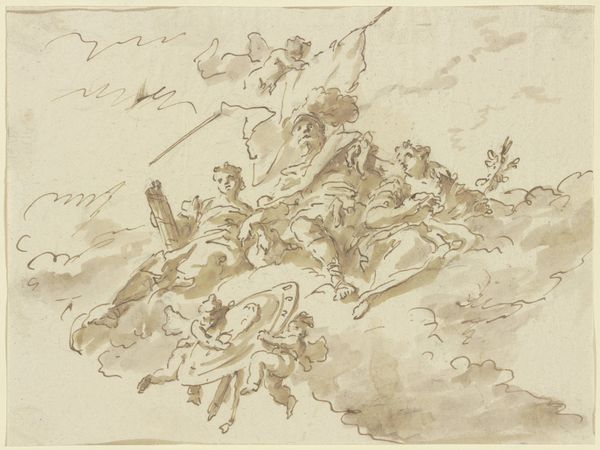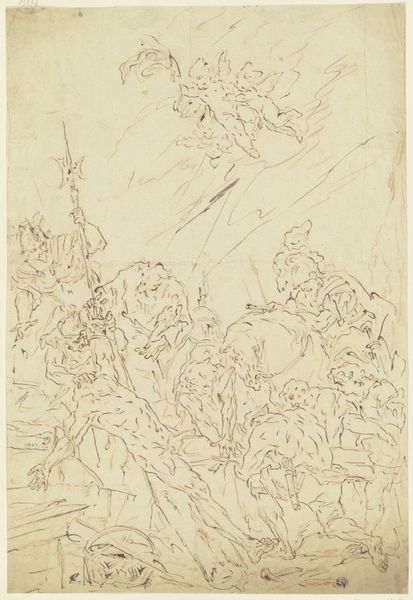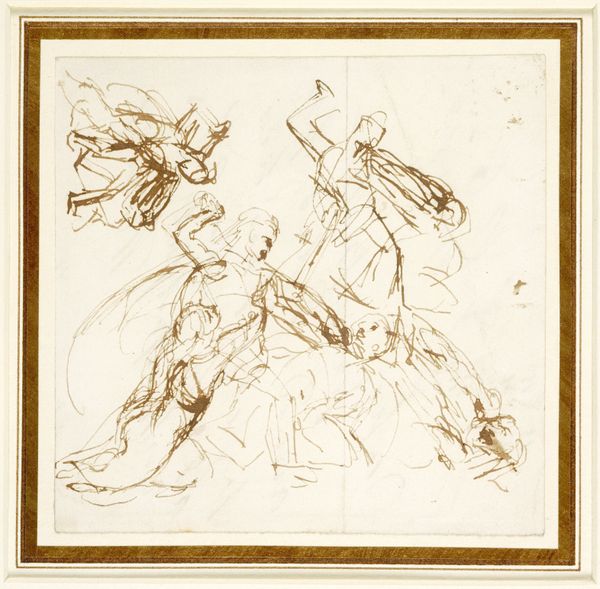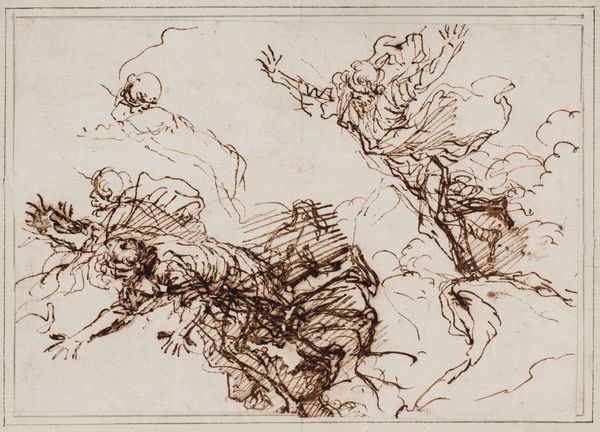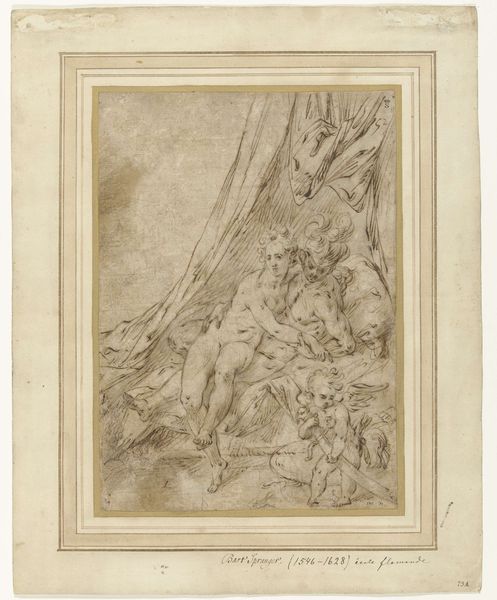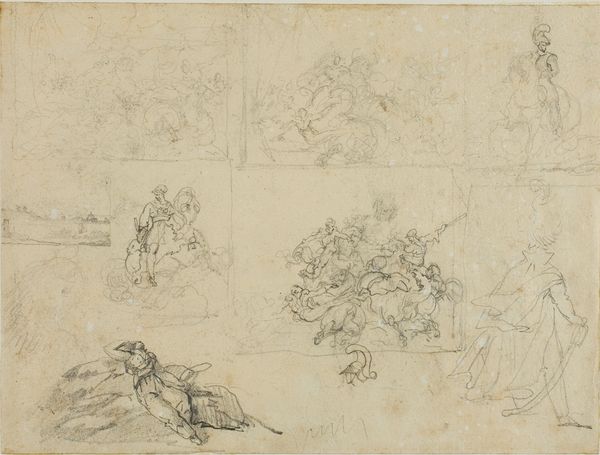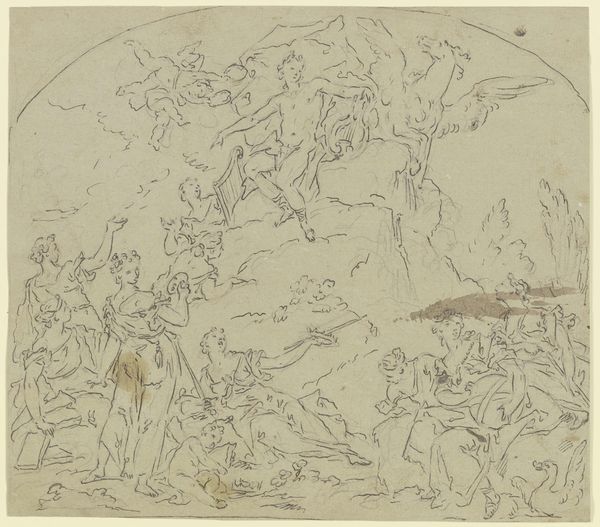
drawing, paper, ink, pen
#
drawing
#
narrative-art
#
baroque
#
ink painting
#
figuration
#
paper
#
ink
#
pen
Dimensions: 150 × 191 mm
Copyright: Public Domain
Curator: Let's consider this drawing, "Rinaldo and Armida" by Donato Creti, dating from around 1693. It's rendered in pen and ink on paper and is currently held here at the Art Institute of Chicago. Editor: My first impression? Fervent. It’s as if I’m peering into a dream, maybe a little chaotic, but undoubtedly brimming with emotion. Curator: Absolutely. Creti was working in Bologna during a time when the Baroque style, known for its drama and intensity, was in full swing. Looking closely, you can see the rapid, almost frenetic linework—very typical of Baroque drawing. It’s not just about representation but capturing movement and feeling. Editor: I love how the ink seems to dance across the paper. There's a real sense of spontaneity, as if he was trying to catch a fleeting vision. I get a powerful sense of intimacy, like we are intruding on something very personal. The sketchy quality amplifies the emotional intensity of the figures, and in spite of the religious symbolism the piece feels human. Curator: Exactly! He skillfully uses hatching and cross-hatching to create depth and volume, especially in the figures’ drapery. And let's not overlook the economic aspect here. Drawings like these were often preparatory studies for larger paintings, frescoes, or engravings, so they functioned as a cost-effective way to explore compositions before committing to grander, more expensive works. Editor: Thinking about that, I wonder how many slightly different, or wildly different sketches ended up in the bin on the way to the final design! The mind boggles. For me, there's this incredible tension between the clear narrative—which comes directly from Tasso’s epic poem—and this deeply personal sense of, well, lust. Curator: It's interesting how you pick up on that lusty tone. One reading of "Rinaldo and Armida" certainly acknowledges that balance between duty and desire. The tale itself centers on conflict between love, magic, and duty. These themes were central to baroque art. Editor: Absolutely. For all its historical context and material constraints, what really stays with me is how relevant and emotionally potent Creti’s drawing feels centuries later. I mean, who hasn’t grappled with conflicting passions? Curator: A pertinent and beautiful thought, reflecting perfectly that lasting intersection of artistry and materiality.
Comments
No comments
Be the first to comment and join the conversation on the ultimate creative platform.
